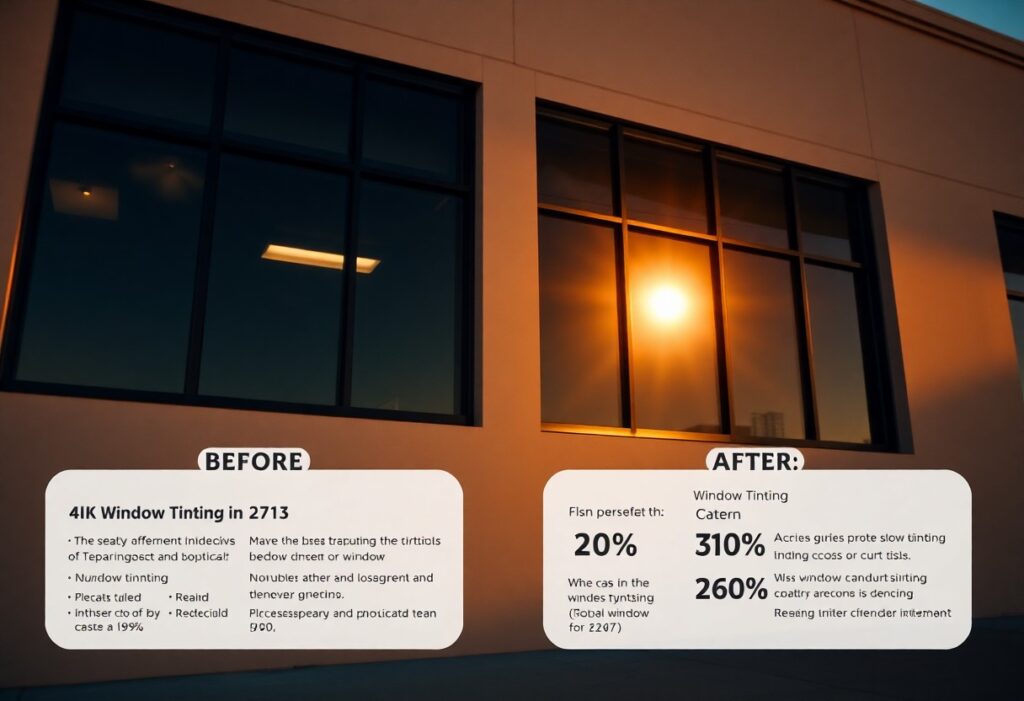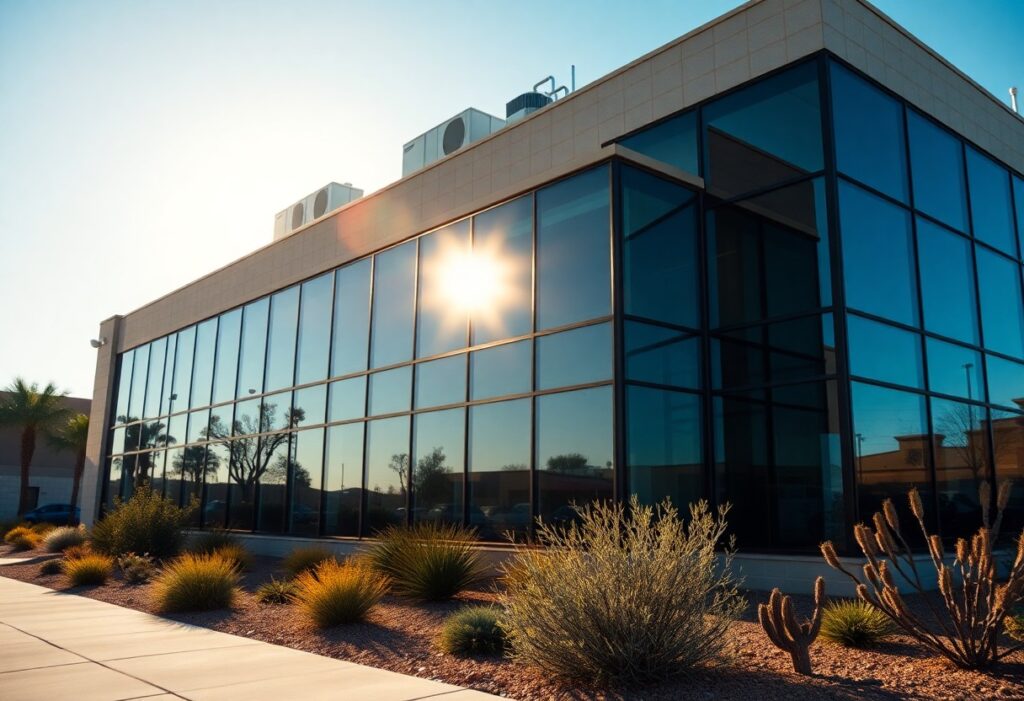Everything You Need To Know Before Investing In Commercial Window Tinting In Sacaton
With the right information, you can make informed decisions about commercial window tinting in Sacaton. This guide will provide you with important insights into the benefits, costs, and various types of window films available. Understanding these aspects will help you enhance your property’s energy efficiency, aesthetics, and privacy while protecting your investment. Explore what you need to know to ensure your window tinting project meets your business needs effectively. Understanding Commercial Window Tinting Commercial window tinting involves applying specialized films to windows, enhancing the functionality and aesthetics of your building. This process not only improves energy efficiency but also adds privacy, protects furnishings from UV damage, and provides safety and security for your premises. Selecting the right tint can significantly impact your workspace environment and operational costs. Types of Window Tinting Films Window tinting films come in various types tailored to specific needs. You may choose from options like dyed, metalized, ceramic, and hybrid films, each offering unique benefits in terms of heat rejection, glare reduction, and privacy. Dyed films are cost-effective and enhance appearance. Metalized films offer durability and heat rejection. Ceramic films provide high performance without signals interference. Hybrid films combine benefits from dyed and metalized features. Thou should assess your requirements to select the ideal film. Film Type Benefits Dyed Improves aesthetics, reduces glare. Metalized Heat rejection, protects glass. Ceramic High performance, clear view. Hybrid Balance of various features. Safety & Security Enhances building protection. Benefits of Commercial Window Tinting Investing in commercial window tinting offers immense advantages for your business. It can enhance energy efficiency, reduce heating and cooling costs, and protect your interior from harmful UV rays, ultimately preserving the longevity of your furnishings. Commercial window tinting can lower energy bills by 10-30% by minimizing heat gain and loss. Moreover, it helps in maintaining a comfortable indoor climate, leading to increased employee productivity. Protecting against 99% of UV rays, your furniture and flooring will last longer. Additionally, enhanced privacy reduces distractions, making the workspace more conducive to focus. Thine investment in quality tinting films can yield impressive returns through energy savings and improved working environments. Factors to Consider Before Investing Before choosing commercial window tinting, evaluate several key factors that could impact your investment. It’s necessary to determine your needs, preferences, and the specific benefits you aim to achieve. Consider the following: Type of tint film suitable for your building Fade resistance and warranty offered Installation time and disruption levels Long-term maintenance requirements Impact on natural light and aesthetics Perceiving these elements will ensure you select the best option for your business environment. Local Regulations and Compliance Familiarizing yourself with local regulations is necessary before proceeding with window tinting. Some municipalities in Sacaton have specific laws dictating the types of window films that can be used, including restrictions on reflectivity and darkness levels. Failure to comply with these regulations can lead to fines or mandatory removal, which can be costly and time-consuming. Cost vs. Long-Term Savings When investing in commercial window tinting, it’s important to weigh initial costs against potential long-term savings. The upfront expenses might seem high, but energy-efficient window films can significantly reduce heating and cooling costs over time. Investing in higher-quality window films may yield substantial energy savings, with studies indicating up to a 30% reduction in energy bills, depending on your location and building use. Additionally, these films prolong the lifespan of furnishings by blocking UV rays, which can lead to further savings. Over time, the cost of the installation can be offset by these ongoing reductions in energy and maintenance expenses, making it a financially sound decision in the long run. Choosing the Right Tinting Company Selecting the right tinting company is vital for achieving the desired results. Look for a provider with a solid reputation and a track record of quality installations. You’ll want a company that uses high-quality films and adheres to local regulations, ensuring that your investment meets all legal requirements and aesthetic goals. Credentials and Experience When evaluating a tinting company, check their credentials and industry experience. Look for certifications from manufacturers, as they indicate that the company has undergone proper training and meets specific quality standards. An experienced team will not only provide expert installation but also offer helpful advice tailored to your unique needs. Customer Reviews and Testimonials Customer reviews and testimonials provide insight into a company’s reliability and quality of service. Look for feedback on the company’s website, social media pages, and independent review platforms. Positive testimonials often highlight professionalism, prompt service, and the durability of the tinting materials used. Pay close attention to the specifics mentioned in customer reviews. For instance, if multiple clients note the company’s responsiveness and attention to detail, it’s a strong indication of good service. Also, consider how the company addresses negative reviews; a professional response reveals a commitment to customer satisfaction. Quality feedback can greatly influence your decision and provide reassurance about your investment in commercial window tinting. Installation Process The installation process for commercial window tinting involves several key steps to ensure quality and longevity. Initially, your chosen tinting company will measure the windows to determine the appropriate film size. Next, they’ll prepare the surface by cleaning and possibly removing any existing films. Once ready, the film is applied using specialized tools to avoid bubbles and imperfections. Finally, the edges are trimmed for a neat finish, and you’ll receive guidance on the drying time and how to care for the tinted windows. Timeline and Expectations The typical timeline for window tinting installation can range from a few hours to a full day, depending on the number of windows and the complexity of the project. Expect the technician to discuss specific time estimates with you prior to starting the job. After installation, you’ll need to wait about 3-5 days for the film to fully adhere and cure, during which time it’s best to avoid cleaning the windows. Maintenance and Care To maximize the life of your window tint, regular maintenance and care are imperative. Avoid abrasive







